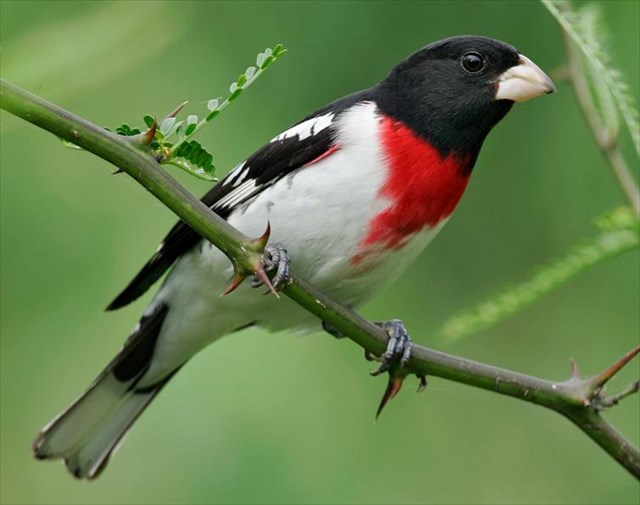
Male Rose-breasted Grosbeaks (Pheucticus ludovicianus) are black-and-white birds with a brilliant red chevron extending from the black throat down the middle of the breast. Females and immatures are brown and heavily streaked, with a bold whitish stripe over the eye. Males flash pink-red under the wings; females flash yellowish. Both sexes show white patches in the wings and tail. These chunky birds use their stout bills to eat seeds, fruit, and insects. They are also frequent visitors to backyard bird feeders, where they eat sunflower seeds with abandon. The sweet, rambling song of a male Rose-breasted Grosbeak is a familiar voice of eastern forests; their sharp “chink” calls are also very distinctive. Rose-breasted Grosbeaks breed in moist deciduous forests, deciduous-coniferous forests, thickets, and semiopen habitats across the northeastern United States, ranging into southeastern and central Canada. They gravitate toward second-growth woods, suburban areas, parks, gardens, and orchards, as well as shrubby forest edges next to streams, ponds, marshes, roads, or pastures.
You can see from the picture, they have a very robust beak. I can tell you from bird banding experience, they can give your finger a pretty good pinch. You can try and give them a twig to bite, but they spit that out to get some flesh. We would do what we called "give them the sacrificial pinky" when removing them from the nets. They are also very vocal when captured. The cache contains a logbook and swag only. You will need your own writing weapon to sign the log. There is plenty of parking on the wide road shoulder.